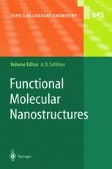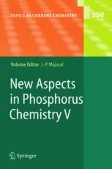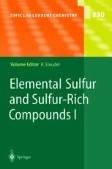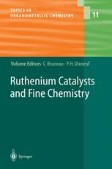Search
Search Results
-
Probing Hydrogen Bonding in Solids Using Solid State NMR Spectroscopy
Solid state nuclear magnetic resonance (NMR) spectroscopy is a powerful and versatile technique for probing structural and dynamic properties of...
-
Polarons and Transport in DNA
It has been widely considered that the wavefunction of an extra electron or hole on the base stack of a DNA molecule is confined to a single site,...
-
Heat Capacity Studies of Spin Crossover Systems
As the spin crossover phenomena occurring in Oh symmetry involve a transfer of electrons between the eg and t2g orbitals, the metal-to-ligand bond...
-
Time-Resolved Relaxation Studies of Spin Crossover Systems in Solution
This chapter focuses on the kinetics of spin-state relaxation, primarily in iron(II) complexes in solution. Initial work carried out during the 1970s...
-
Density Functional Theory Calculations for Spin Crossover Complexes
Density functional theory (DFT) provides a theoretical framework for efficient and fairly accurate calculations of the electronic...
-
Electrophoretic mobility of colloidal particles in salt-free media
It is shown that the electrophoretic mobility μ of dilute spherical colloidal particles of radius a, carrying charge Q in a salt-free medium...
-
Nanoscale Objects: Perspectives Regarding Methodologies for Their Assembly, Covalent Stabilization, and Utilization
In this review, we highlight some of the most recent advances in the design and utilization of organic nanoscale objects. Initially discussed is the...
-
Octahedral Zirconium Complexes as Polymerization Catalysts
The synthesis and X-ray structure of various octahedral zirconium complexes and their catalytic properties in the polymerization of α-olefins are...
-
The Rise of Organophosphorus Derivatives in π-Conjugated Materials Chemistry
This chapter concerns the synthesis and properties of π-conjugated oligomers and polymers containing phosphorus moieties, an area of increasing...
-
Carboselenothioic and Carbodiselenoic Acid Derivatives and Related Compounds
In this chapter we consider derivatives of carboselenothioic and carbodiselenoic acids, and compounds related to them. Ammonium salts and inner salts...
-
Biologically Produced Sulfur
Sulfur compound oxidizing bacteria Sulfur compound oxidizing bacteria produce sulfur as an intermediate in the...
-
Hydrozirconation and Its Applications
Next to hydroboration and hydrostannylation, hydrozirconation is among the few general methods available for the stoichiometric conversion of readily...
-
Ligand Field Theoretical Considerations
The phenomenon of the thermal spin transition, as observed for octahedral transition metal complexes having a d...
-
Special Classes of Iron(II) Azole Spin Crossover Compounds
In this chapter, selected results obtained so far on Fe(II) spin crossover compounds of 1,2,4-triazole, isoxazole and tetrazole derivatives are...
-
Progress in the Asymmetric Synthesis of 1,2-Diamines from Azomethine Compounds
Recent advances in the preparation of optically pure 1,2-diamines by stereoselective addition reactions to azomethine compounds (imines, iminium...
-
Intraband Spectroscopy and Semiconductor Nanocrystals
This chapter reviews intraband spectroscopy as it has been applied to semiconductor nanocrystals synthesized by colloid methods.
-
Application of Evolutionary Algorithms to Global Cluster Geometry Optimization
This contribution focuses upon the application of evolutionary algorithms to the nondeterministic polynomial hard problem of global cluster geometry...
-
DNA Electron Transfer Processes: Some Theoretical Notions
Charge motion within DNA stacks, probed by measurements of electric conductivity and by time-resolved and steady-state damage yield measurements, is...
-
Ruthenium-Catalyzed C–C Bond Formation
Molecular ruthenium catalysts are now currently used to perform selective carbon–carbon bond formation by combination of simple substrates. Their...
-
Valence Tautomeric Transition Metal Complexes
Valence d-orbital energies of the first row transition metals are close to the frontier π-orbital energies of o-benzoquinones. Complexes prepared...
